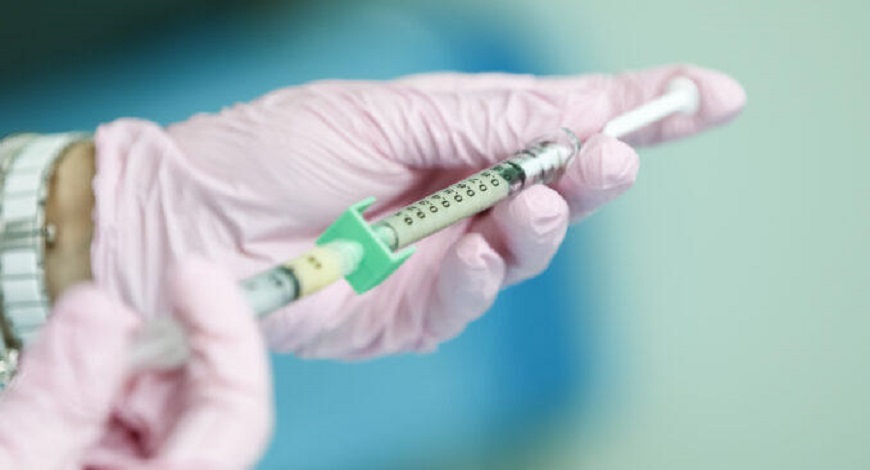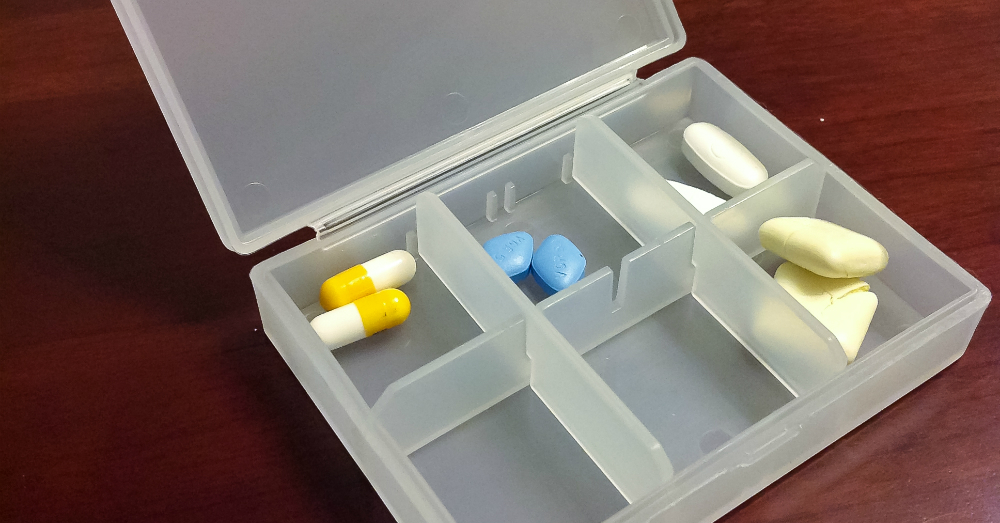Serratiopeptidase
- I. Introduction
- II. Understanding Serratiopeptidase
- III. Approved Uses of Serratiopeptidase
- IV. Off-label Uses of Serratiopeptidase
- V. Dosage and Administration of Serratiopeptidase
- VI. Side Effects of Serratiopeptidase
- VII. Warnings and Contraindications for Serratiopeptidase Use
- VIII. Interactions with Serratiopeptidase
- IX. Handling an Overdose of Serratiopeptidase
- X. Storing and Handling Serratiopeptidase
- XI. Conclusion
I. Introduction
A. Brief Overview of Serratiopeptidase
Serratiopeptidase, or serrapeptase as it is commonly known, is an essential proteolytic enzyme in healthcare. Its notable significance lies in its diverse biological actions, such as its anti-inflammatory anti-edematous, and fibrinolytic activities.
B. Historical Context and Discovery
The investigation into serratiopeptidase commenced with a detailed examination of the silkworm Bombyx mori. Remarkably, this enzyme was found to reside in its digestive system. The unique capability of this enzyme to degrade the tough cocoon of the mulberry silkworm catalyzed its subsequent extraction and commercial manufacturing.
C. Common Uses and Applications
Serratiopeptidase is widely used across various health sectors worldwide today. It finds typical applications in reducing inflammation and swelling after surgery and managing symptoms of sinusitis. And it is improving respiratory conditions by regulating mucus. These applications only scratch the surface of its immense potential, making it an essential asset in modern medicine.
II. Understanding Serratiopeptidase
A. Composition and Characteristics of Serratiopeptidase
Serratiopeptidase, in essence, is an enzyme known as a protease. Its primary function is to break down proteins into smaller polypeptides or single amino acids. What sets this enzyme apart is its unique ability to hydrolyze bradykinin, histamine, and serotonin - compounds that are closely linked to inflammation and edema.
B. How Serratiopeptidase Works in the Human Body
The mechanism by which serratiopeptidase operates in the human body is a matter of significant interest. Once it is introduced into the bloodstream, this enzyme begins its proteolytic action by breaking down proteinaceous debris and toxins through the degradation of unnecessary proteins and the reduction of exudate thickness. It facilitates the removal of these detrimental substances. Ultimately improving tissue repair and promoting wound healing.
III. Approved Uses of Serratiopeptidase

A. Clinical Applications
Serratiopeptidase is widely utilized in various clinical settings. It is precious as an additional treatment for arthritis. It is effectively reducing pain and inflammation. Additionally, it aids in managing bacterial infections by assisting with the absorption of antibiotics and targeting biofilms, which are commonly unresponsive to traditional antibiotic approaches.
Here are some references that you can check out for more information about Serratiopeptidase:
1. Lybrate
2. Practo
3. Frontiers
B. Surgical Aid: Reducing Swelling and Promoting Healing
Serratiopeptidase is often employed in postoperative care as it has powerful anti-inflammatory and anti-edematous properties. These actions are critical in minimizing swelling and bruising after surgery, ensuring a more pleasant recovery experience. Furthermore, this enzyme aids in the removal of proteinaceous waste and improves tissue permeability, thereby expediting the healing process.
Here are some references that you can check out for more information about Serratiopeptidase:
1. MDPI
2. Lybrate
4. Drugs.com
C. Respiratory Conditions: Managing Mucus and Inflammation
Serratiopeptidase plays a crucial role in respiratory health. It significantly contributes to the management of conditions like chronic bronchitis and asthma. By reducing mucus thickness, it helps clear the airways providing relief from congestion and enhancing respiratory function. Moreover, its anti-inflammatory properties help alleviate the inflammation typically linked with these respiratory ailments.
Here are some references that you can check out for more information about Serratiopeptidase:
1. Balance One
3. iHerb
D. Chronic Sinusitis: Easing Symptoms and Enhancing Quality of Life
The impact of chronic sinusitis on patients' quality of life is significant, with symptoms such as facial pain, nasal congestion, and a decreased sense of smell. However, Serratiopeptidase is effective in alleviating these symptoms. By reducing inflammation and helping to clear mucus, serratiopeptidase can significantly improve patients' day-to-day living and relieve them from the bothersome effects of chronic sinusitis.
Here are some references that you can check out for more information about Serratiopeptidase:
2. Dr. Axe
3. Flo Health
4. Hello Doctor
IV. Off-label Uses of Serratiopeptidase
A. Potential Application in Cardiovascular Health
Ongoing research is shedding light on the various uses of serratiopeptidase. And its potential role in cardiovascular health is particularly noteworthy. This proteolytic enzyme has been found to possess anti-platelet aggregatory properties, which can help prevent atherosclerosis—an essential concern for cardiovascular wellbeing. The ability of serratiopeptidase to facilitate the breakdown of atheromatous plaques may have significant implications for the management of heart health.
Here are some references that you can check out for more information about Serratiopeptidase:
3. Lybrate
4. Dr. Weil
5. Healthline
B. Promising Use in Dental and Oral Health
Serratiopeptidase has shown promise in the field of dental and oral health. Its powerful anti-inflammatory and anti-edematous properties make it a potential option for managing postoperative dental pain and swelling. Additionally, it may contribute to fighting periodontal diseases and enhancing oral hygiene by speeding up the breakdown of bacterial biofilms.
Here are some references that you can check out for more information about Serratiopeptidase:
1. MDPI
2. WebMD
3. Frontiers
C. The Role of Serratiopeptidase in Managing Pain and Inflammation
Despite not being officially approved for this use, Serratiopeptidase is commonly used off-label to treat a range of pain and inflammatory conditions. These include osteoarthritis, where it helps reduce inflammation and pain leading to improved mobility. Additionally, it aids in managing pain and inflammation in rheumatoid arthritis, thereby enhancing daily functioning. Moreover, it may offer symptomatic relief from back pain and neck ache .
Here are some references that you can check out for more information about Serratiopeptidase:
1. Hello Doctor
3. Lybrate
D. Emerging Research in Neurological Conditions
Recent studies indicate that serratiopeptidase could potentially have a significant impact on neurological disorders. Helping to decrease inflammation and eliminating proteinaceous waste may play a role in managing conditions like Alzheimer's disease and multiple sclerosis.
Here are some references that you can check out for more information about Serratiopeptidase:
1. Frontiers
3. Hello Doctor
V. Dosage and Administration of Serratiopeptidase
A. Standard Dosage Guidelines
The recommended dosage for serratiopeptidase usually falls within the range of 10 to 60 mg per day in separate doses. Nevertheless, it's important to note that this dosage might differ depending on factors such as age, overall health condition, and response to treatment experienced by the individual. Therefore, a healthcare professional must determine the most suitable dose for each patient.
B. Dosage Variations for Different Conditions
Although the standard dosage guidelines offer a broad outline, it is essential to consider individual circumstances when determining the appropriate dosage for serratiopeptidase. Certain conditions, such as acute inflammation, may require a higher dosage during shorter periods. Conversely, chronic conditions may warrant a lower dosage over a longer duration.
C. Timings and the Role of Food Intake
Serratiopeptidase is usually recommended to be taken on an empty stomach. It ensures that at least two hours have passed since the last meal. This is essential to ensure optimal absorption by careful timing and considering food intake. One can significantly influence the effectiveness and bioavailability of this enzyme.
VI. Side Effects of Serratiopeptidase
A. Common Side Effects and Their Management
Serratiopeptidase may induce common side effects, such as nausea, upset stomach, and minor skin reactions. Fortunately, these symptoms are usually temporary and can be well controlled by making appropriate adjustments to the dosage or taking the enzyme with food.
B. Rare but Serious Side Effects: When to Seek Immediate Help
Even though they occur rarely, it is imperative to acknowledge the possibility of serious side effects in specific individuals. These adverse manifestations include severe allergic reactions, abnormal bleeding, and respiratory hardships. In light of this information, seeking immediate medical attention should be prioritized upon experiencing any of these symptoms.
C. Long-term Side Effects: What We Know So Far
Limited existing data hinders our understanding of the long-term side effects of serratiopeptidase utilization. Nevertheless, utilizing it for short durations appears to pose no significant concerns in terms of safety. However, if one were contemplating prolonged usage, enlisting the guidance and expertise of a healthcare professional becomes imperative. It remains crucial that future research endeavors focus on elucidating possible enduring implications resulting from administering serratiopeptidase medication effectively.
VII. Warnings and Contraindications for Serratiopeptidase Use
A. Known Contraindications: Who Should Avoid Serratiopeptidase?
While serratiopeptidase is often considered safe, it is essential to note that there are certain situations where its use should be avoided. This specifically applies to individuals with bleeding disorders or those scheduled for surgery, as the risk of excessive bleeding may be heightened. Furthermore, if an individual has a known allergy to serratiopeptidase, it is recommended that they refrain from using it in order to prevent potential allergic reactions.
B. Special Precautions: When Extra Care Is Needed
In certain situations. It is important to exercise caution when using serratiopeptidase. For example, individuals with gastrointestinal ulcers should use this enzyme carefully due to the potential risk of increased bleeding. It is also advisable for those with kidney or liver diseases to seek medical advice and be cautious as these conditions can affect the metabolism and elimination of the enzyme.
C. Important Information for Specific Populations
1. Administration to Elderly
It is essential to closely monitor elderly individuals who are taking serratiopeptidase as their liver and kidney function may be diminished. This can have an effect on the way the enzyme is metabolized and cleared from the body.
2. Administration to Pregnant Women and Nursing Mothers
It is generally advised to avoid the use of serratiopeptidase in pregnant women and nursing mothers, except when absolutely necessary and overseen by a healthcare provider. The safety and effectiveness of serratiopeptidase in these groups have not been extensively studied.
3. Administration to Children
It is crucial to exercise caution when considering the use of serratiopeptidase in children. While it may be deemed appropriate for certain conditions, it is imperative that this decision is made and overseen by a healthcare professional.
VIII. Interactions with Serratiopeptidase
A. Drug Interactions: Combining Serratiopeptidase with Other Medications
One should consider the possibility of interactions between serratiopeptidase and various medications, as this can affect its effectiveness or cause adverse reactions. Serratiopeptidase may interact with blood thinning medications or antiplatelet drugs, raising concern for increased bleeding risks. To ensure safety and appropriate usage. It is consulting with a healthcare provider before combining serratiopeptidase with other medications.
B. Food and Dietary Interactions: Things to Avoid
There are no known specific food interactions with serratiopeptidase. However, it is typically advised to take the medication on an empty stomach for optimal absorption. Therefore, It is essential to appropriately time your food intake to ensure that you benefit most from the enzyme.
C. Lifestyle Interactions: How Exercise and Sleep Might Affect Use
Currently, there is no concrete evidence demonstrating any direct relationships between serratiopeptidase, exercise, and sleep. However, it is crucial to acknowledge that embracing a healthy lifestyle can amplify the overall advantages of using this enzyme. Consequently, its efficacy in effectively managing inflammation and addressing other health conditions is bolstered.
IX. Handling an Overdose of Serratiopeptidase
A. Recognizing the Symptoms of Overdose
If an individual experiences a serratiopeptidase overdose, it is essential to be aware of the potential symptoms that may arise. These can vary and may involve severe nausea, vomiting, abdominal pain, and in rare instances, bleeding. It is imperative to promptly identify these symptoms to address and manage the situation effectively.
B. Immediate Steps to Take in Case of Overdose
Should there be suspicions regarding an overdose of serratiopeptidase, it becomes essential to seek prompt medical attention. Until medical care is available, it would be prudent to prioritize the individual's comfort and abstain from consuming more enzymes.
C. Long-term Implications and Management
The precise long-term repercussions of an overdose of serratiopeptidase are currently unclear due to insufficient data. Nevertheless, it must be recognized that excessive and extended use has the potential for adverse effects, just like any other medication. Hence for optimal safety and effectiveness, it is crucial to adhere strictly to recommended guidelines or seek guidance from a medical expert.
X. Storing and Handling Serratiopeptidase

A. Proper Storage Conditions for Serratiopeptidase
It is essential to adhere to specific storage conditions for Serratiopeptidase to preserve its efficacy and safety, just like any other medicine. It is recommended to store it in a cool and dry place. While also keeping it away from direct sunlight. It should be noted that exposing the enzyme to high temperatures and humidity may lead to a decrease in its potency.
B. Expiry and Disposal: Ensuring Safe Use
It is highly recommended that you always check the expiry date before using serratiopeptidase. Ingesting an expired product can yield inefficiency and potential harm. Furthermore, take care when discarding any expired or unused portions of serratiopeptidase by adhering strictly to local regulations not to inflict harm upon our surroundings.
C. Handling Precautions: Best Practices for Users
To maintain the integrity of serratiopeptidase, it is essential to handle it with clean hands to minimize the risk of contamination. It is crucial not to use the product if the seal is broken or if there are any indications of tampering. If a dose is missed, you should refrain from doubling up on the next dose and instead adhere to your regular dosing schedule.
XI. Conclusion
A. Recap of Serratiopeptidase's Importance and Use
To sum up. Serratiopeptidase is a proteolytic enzyme that holds numerous potential health benefits—these range from lessening inflammation and pain to aiding in respiratory conditions. Nevertheless, for it to be effective, It is crucial to use it correctly, take the appropriate dosage and administer it carefully. This is especially important when dealing with specific groups such as the elderly, children, and pregnant or nursing women.
B. Potential Future Research and Developments in Serratiopeptidase Use
Although the existing research offers valuable insights into the applications of serratiopeptidase, there is still a lot more to learn. It would be beneficial to conduct future studies that can delve deeper into understanding its long-term effects. Further exploration of its interaction with other drugs and lifestyle factors could provide a clearer picture. We can enhance serratiopeptidases' position in natural health interventions by uncovering additional therapeutic applications. This will contribute significantly to the diverse disease prevention and treatment strategies in modern medicine.





















